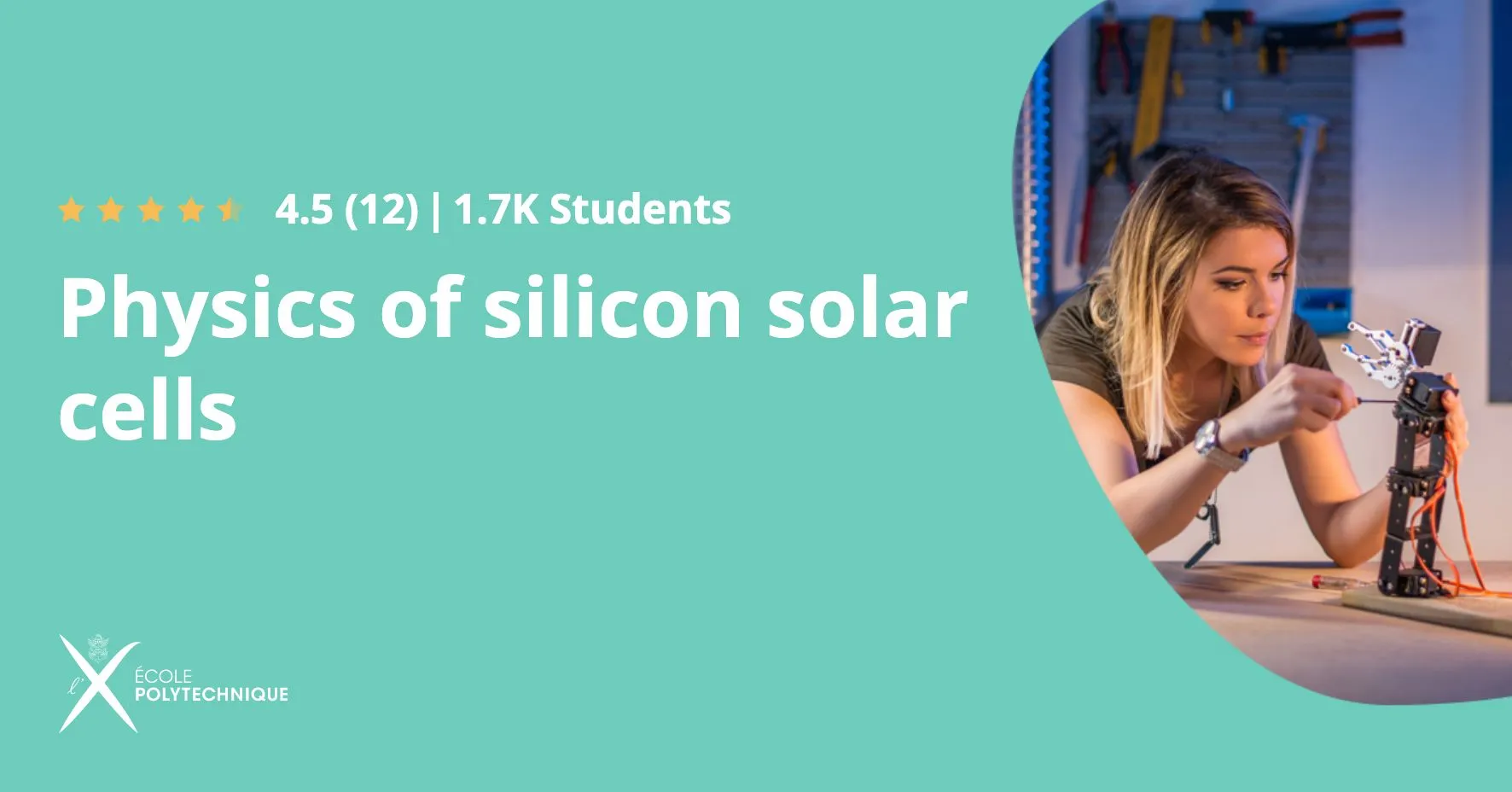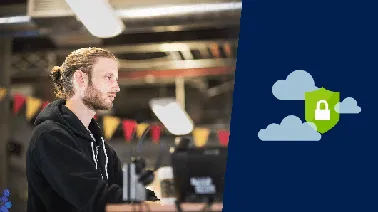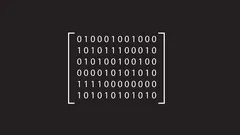
Physics of silicon solar cells 
This MOOC provides an introduction to the physics of silicon solar cells, exploring the principles of operation and the main parameters that define their performance. This course offers an overview of the physics of silicon solar cells, including the principles of operation and the key parameters that determine their efficiency. Participants will gain a better understanding of the technology and its potential applications. ▼
ADVERTISEMENT
Course Feature
![]() Cost:
Cost:
Free
![]() Provider:
Provider:
Coursera
![]() Certificate:
Certificate:
No Information
![]() Language:
Language:
English
![]() Start Date:
Start Date:
Self Paced
Course Overview
❗The content presented here is sourced directly from Coursera platform. For comprehensive course details, including enrollment information, simply click on the 'Go to class' link on our website.
Updated in [March 06th, 2023]
This course provides an introduction to the physics of silicon solar cells. It begins with an overview of semiconductor physics, followed by a discussion of electron transport phenomena in a diode device. The course then delves into the details of solar cell operation, including conversion efficiency limitations. The solar spectrum and optical properties of the cells are also explored. Finally, the crystalline silicon technology is described, from the bulk crystalline growth to the preparation of heterojunctions combining crystalline and amorphous materials.
[Applications]
The application of this course can be seen in the design and optimization of silicon solar cells. Students can use the knowledge gained from this course to understand the physical principles behind the operation of solar cells and to develop strategies to improve their efficiency. Additionally, the course can be used to gain insight into the optical properties of solar cells and the effects of the solar spectrum on their performance. Finally, the course can be used to gain an understanding of the crystalline silicon technology and the fabrication of heterojunctions.
[Career Paths]
1. Solar Cell Engineer: Solar Cell Engineers are responsible for designing, developing, and testing solar cells and related components. They must have a strong understanding of semiconductor physics and the ability to work with a variety of materials. As the demand for renewable energy sources increases, the need for Solar Cell Engineers is expected to grow.
2. Solar Energy Technician: Solar Energy Technicians are responsible for installing, maintaining, and repairing solar energy systems. They must have a strong understanding of electrical systems and be able to work with a variety of tools and equipment. As the demand for renewable energy sources increases, the need for Solar Energy Technicians is expected to grow.
3. Solar Energy Consultant: Solar Energy Consultants are responsible for providing advice and guidance to clients on the best solar energy solutions for their needs. They must have a strong understanding of the solar energy industry and be able to provide accurate and up-to-date information. As the demand for renewable energy sources increases, the need for Solar Energy Consultants is expected to grow.
4. Solar Energy Researcher: Solar Energy Researchers are responsible for conducting research on solar energy technologies and applications. They must have a strong understanding of the physics of solar energy and be able to develop new technologies and applications. As the demand for renewable energy sources increases, the need for Solar Energy Researchers is expected to grow.
[Education Paths]
1. Bachelor of Science in Physics: This degree program provides students with a comprehensive understanding of the fundamental principles of physics, including mechanics, electricity and magnetism, thermodynamics, optics, and quantum mechanics. Students will also gain an understanding of the application of physics to the development of new technologies, such as solar cells.
2. Master of Science in Photovoltaics: This degree program focuses on the study of photovoltaic systems, including the design, fabrication, and testing of solar cells. Students will gain an understanding of the physics of solar cells, as well as the materials and processes used to create them.
3. Doctor of Philosophy in Photovoltaics: This degree program provides students with an advanced understanding of the physics of solar cells, as well as the materials and processes used to create them. Students will also gain an understanding of the development of new technologies, such as the use of nanomaterials and nanostructures in solar cells.
4. Master of Science in Nanotechnology: This degree program focuses on the study of nanotechnology, including the design, fabrication, and testing of nanomaterials and nanostructures. Students will gain an understanding of the physics of nanomaterials and nanostructures, as well as the materials and processes used to create them. This degree program is becoming increasingly popular as nanotechnology is being used to create more efficient solar cells.
Pros & Cons

Very informative

Good depth into the physics element of photovoltaics

Very useful course

Course materials are very interesting

Great course for those who want to start their career in Solar energy engineering

Very Good to understand basics

Bernard's accent is difficult to understand

No French version available

No subtitles in French
Course Provider

Provider Coursera's Stats at AZClass
Discussion and Reviews
0.0 (Based on 0 reviews)
Explore Similar Online Courses

Microsoft Azure Security Services

React From The Ground Up

Python for Informatics: Exploring Information

Social Network Analysis

Introduction to Systematic Review and Meta-Analysis

The Analytics Edge

DCO042 - Python For Informatics

Causal Diagrams: Draw Your Assumptions Before Your Conclusions

Whole genome sequencing of bacterial genomes - tools and applications

Matrices for physics

AP Physics C - Electricity & Magnetism: Exam Prep

Free Physics Tutorial - Basics of Physics - Motion
 Related Categories
Related Categories
 Popular Providers
Popular Providers
Quiz
 Submitted Sucessfully
Submitted Sucessfully
1. What type of materials are used in crystalline silicon technology?
2. What is the main purpose of electron transport phenomena in a diode device?
3. What is the main limitation of solar cell conversion efficiency?


Start your review of Physics of silicon solar cells